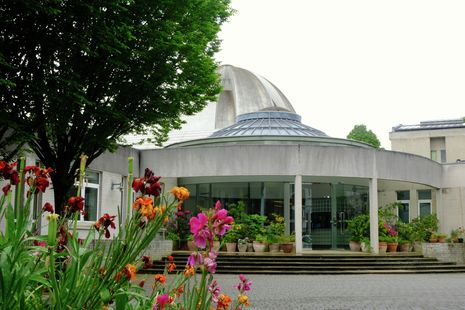Stop debating women’s colleges
Women’s colleges remain vital spaces of support for Cambridge’s female students, argues Rosie Roberts

In Cambridge, misogyny may be less entrenched in the University’s rules and practices, but it remains a constant undercurrent, present in our traditions, societies and culture. The role of women’s colleges amidst this is consistently questioned, their importance diminished and their history ignored. Despite that, they seem to provide part of Cambridge’s solution, undercutting patriarchy embedded here.
After a year at Cambridge, and as one of many Medwards students who didn’t pick her college (the pool jokes got old fast), I’ve been asked countless times why my college exists. When I first arrived, I was similarly confused. As the year went on, I found myself repeatedly having to defend women’s colleges, and in doing so have been convinced of their necessity in modern Cambridge.
“Trying to access institutions and societies that reject you is essential for progress, but it’s also exhausting, requiring the emotional labour of change to rest on those facing discrimination”
JCRs and students contend with bad behaviour from male students, including an incident where a John’s student urinated on sanitary products in a ‘misogynistic’ act. Colleges uphold spaces that exclude women, from the shutting down of St Johns Voices to rampant misogyny in the Union. The University continually ignores the facts: over 500 current students and alumnae signed an open letter, with the Cambridge University Student Union Women’s Campaign condemning Cambridge for its continued failure to handle sexual misconduct allegations.
To understand where women’s colleges come from, we have to look at the history of their obstruction. The first time allowing women degrees was voted on in 1897 it prompted students to riot. The second attempt in 1921 caused a group of male students to storm Newnham. Their legacy remained well into the late twentieth century, when male students at Magdalene, the final Cambridge college to accept women, wore black armbands and held a so-called ‘funeral for education’.
Finding a space free of the kind of misogyny inherent in an ancient, classist and patriarchal institution is therefore pretty difficult, but not impossible. Despite the obvious and continual misogyny problem in our university, passed down through generations of students, women’s colleges remain in question - philosophically and financially. Lucy Cavendish, the poorest college (by Cambridge standards), voted to become mixed in 2019 to expand their number of applicants. Murray Edwards’ £30 million bailout was so essential in 2005 that the college soon changed its name to reflect its gratitude. In that case, why are we bothering to continue with this all-women academic experiment?
To me, these colleges remain essential. Women’s colleges at Cambridge aren’t really a space without men: that isn’t their appeal. It’s that they’re a space FOR women, providing specific help, facilities and opportunities for women to access education. We run specific outreach programmes for women students and hold conferences for women in STEM. Talks by women in industry are frequent at Medwards, and our alumnae programmes encourage breaking into male-dominated industries. Trying to access institutions and societies that reject you is essential for progress, but it’s also exhausting, requiring the emotional labour of change to rest on those facing discrimination. We work hard enough without needing to reshape the place we live for half the year, a place that should feel safe.
Beyond that, to claim that women-centred spaces are meaningless in modern Cambridge ignores the communities they remain essential for (religious women, as one example). We’re afforded the ability to define what a woman is without the opinions of men; queer and trans women are central parts of women’s colleges, vital in their founding and development.
Many have asked me why we don’t go the route of Lucy Cav, but Medwards and Newnham wouldn’t suddenly be ‘proper’ colleges if we let men in; we have our own traditions and cultures that make that idea bizarre. Medwards houses the largest collection of women’s art in Europe, while Newnham’s building carries marks of the college’s history, including attempts from rioters to break the Pfeiffer Arch. The fact I still hear stories from men lovingly or jokingly retelling their college’s historic misogyny tells me our culture isn’t as enlightened as we believe.
“Instead of making ourselves smaller to fit into institutions that demean us, we must support the spaces women have already carved out”
Separating women and men isn’t necessarily the goal, neither is educational discrimination. Male students have supervisions in our colleges, and my supervisors have been male at Medwards. Space to self-define and self-regulate without the baggage of patriarchal traditions and viewpoints is, instead, their function.
This isn’t a call to get rid of men in Cambridge - just a request for people to change their perspective. Instead of making ourselves smaller to fit into institutions that demean us, we must support the spaces women have already carved out. This isn’t an advert (I promise no one is paying me), but to me, debating the state of women’s colleges is asking the wrong question. Let’s fix the misogyny problem at our mixed colleges before we axe our women’s ones.
 News / Cambridge student numbers fall amid nationwide decline14 April 2025
News / Cambridge student numbers fall amid nationwide decline14 April 2025 News / Greenwich House occupiers miss deadline to respond to University legal action15 April 2025
News / Greenwich House occupiers miss deadline to respond to University legal action15 April 2025 Comment / The Cambridge workload prioritises quantity over quality 16 April 2025
Comment / The Cambridge workload prioritises quantity over quality 16 April 2025 Sport / Cambridge celebrate clean sweep at Boat Race 202514 April 2025
Sport / Cambridge celebrate clean sweep at Boat Race 202514 April 2025 Features / The TikTok college: using social media in access and outreach15 April 2025
Features / The TikTok college: using social media in access and outreach15 April 2025






